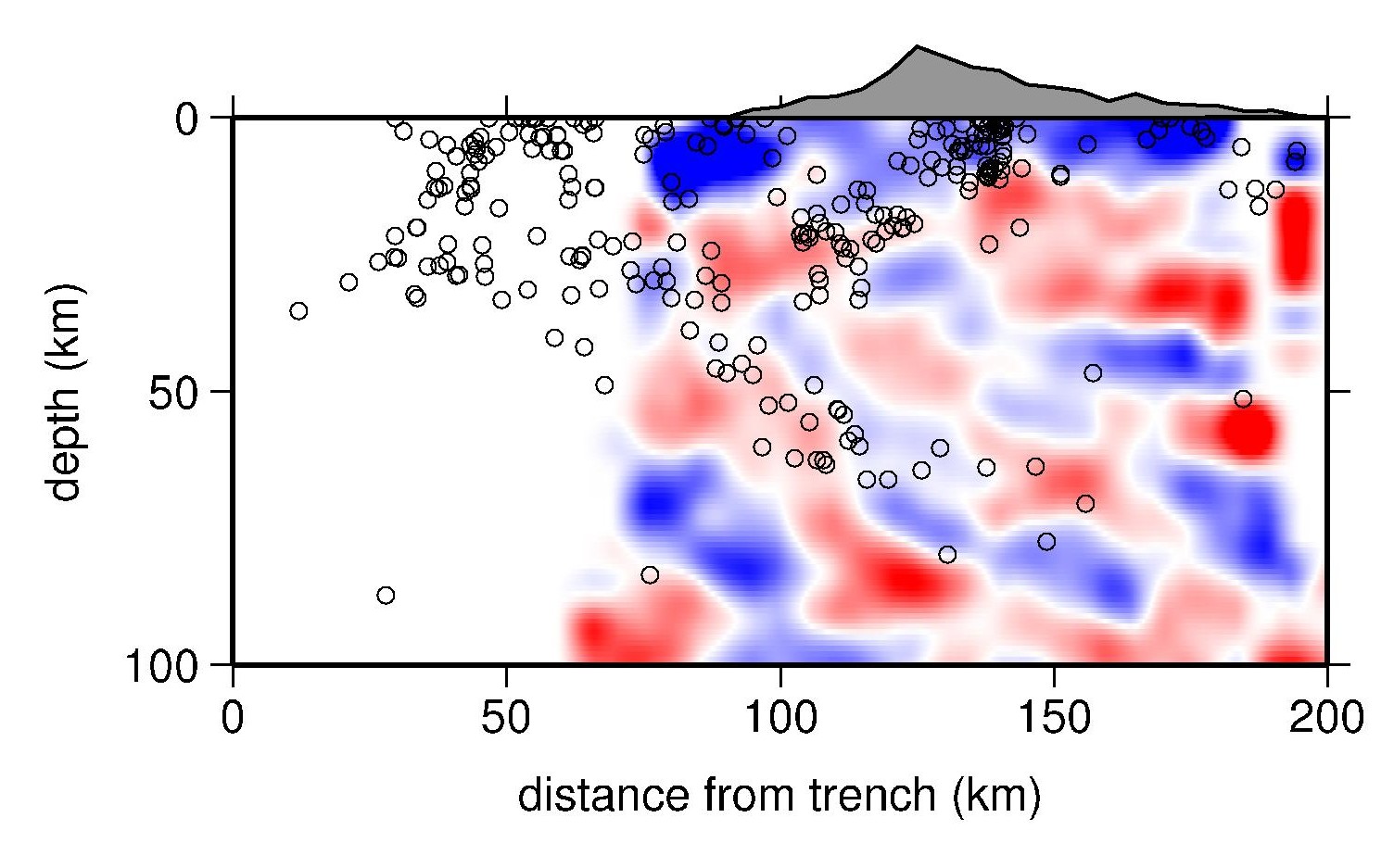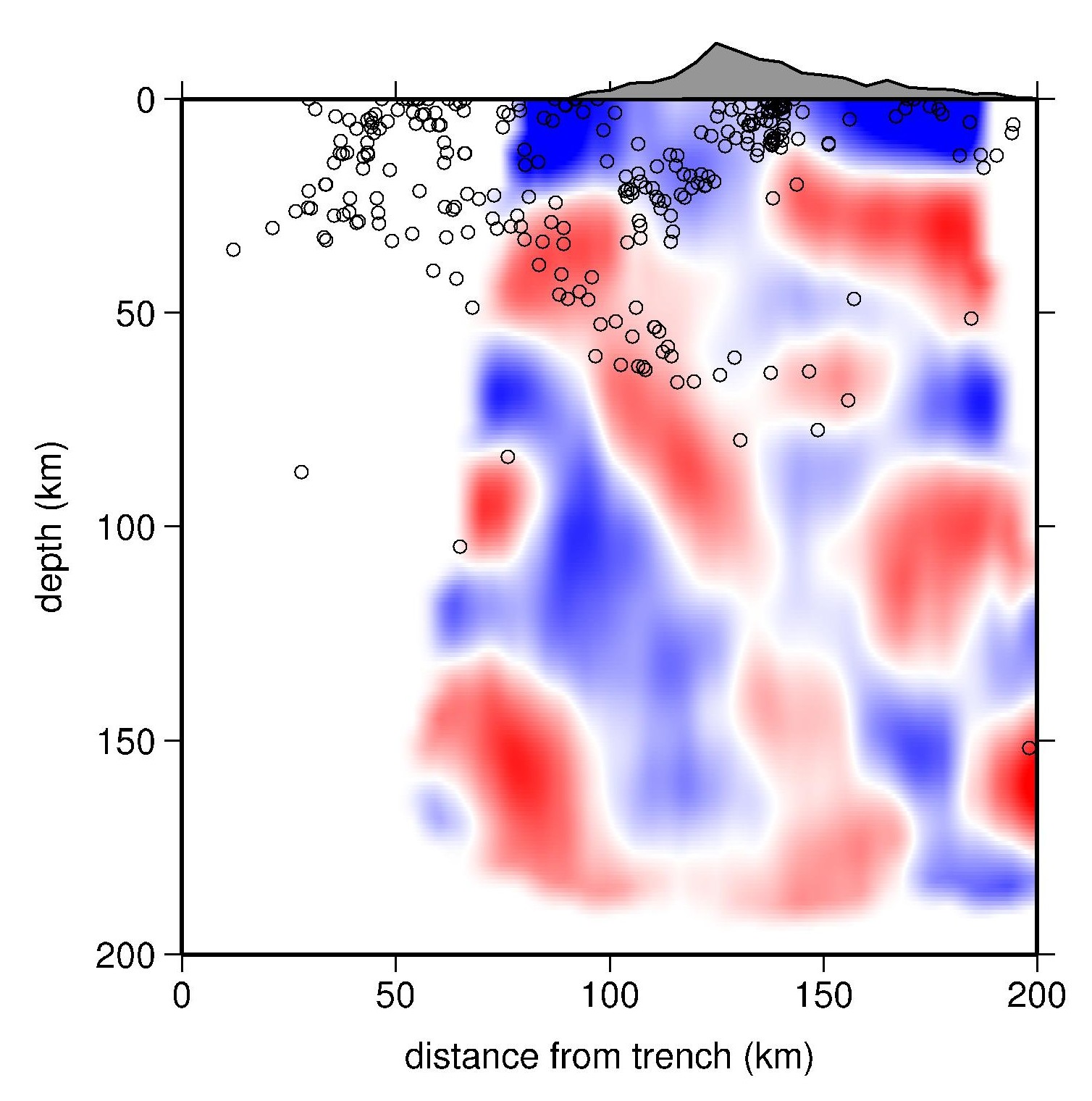 Web Content Display Web Content Display
Receiver Function Study - Southern Costa RicaAs part of the SFB 574 subproject A2, a transect of broad-band seismometers crossing the Talamanca mountain range in Costa Rica was installed from March 2005 until April 2007 (Phase II). The stations were operated in cooperation with the Universidad de Costa Rica and the Instituto Costarricense de Electricidad. The teleseismic events recorded by these stations have been analyzed with the receiver function method, which uses the conversion of P to S waves (and vice versa) at velocity/density discontinuities along their path through the Earth to investigate the structure of the crust and mantle. An emphasis of this study is on the detection of the downgoing slab and the Moho beneath Costa Rica, which could not be unambiguously identified by previous active seismic investigations. Migrated receiver functions trending vertically to the trench are shown in the figure. The receiver functions were filtered with a 1s-lowpass and projected onto a profile vertical to the trench. Red features are positive conversions, blue negative conversions. The Moho of the overriding plate is confirmed around 35 km depth as a positive-amplitude P-S conversion signal. A crustal interface at around 15-20 km depth is also found.
To resolve deeper features, lower frequencies (5s) were considered, shown below. These show a steeply dipping signal, which may indicate the presence of a deep, dipping structure, probably the downgoing Cocos slab. At shallow levels, the dipping structure agrees roughly with local seismicity observed by the Quepos_network, while bending to steeper dip below. Modelling studies are still ongoing, but appear to confirm the presence of a dipping slab below South-Central Costa Rica. The continuation of this slab further South, where the subduction/collision of the aseismic Cocos Ridge is believed to cause underplating and quench volcanism, is still elusive.
The results of this method will be combined with the results from the local earthquake tomography study to resolve the deep structure of the subduction zone beneath Costa Rica. contact: Yvonne Dzierma |
 Events Events
Kieler Wissenschaftler fühlen den 'Puls der Erde' Wie funktioniert die Recyclingmaschine der Erde?Nach elf Jahren endet der Kieler Sonderforschungsbereich 574 zu Subduktionszonen Final colloquium of SFB 574 Teilprojekt ÖffentlichkeitsarbeitMEERESFORSCHUNG FÜR MICH UND DICH |
|||
©SFB574 // Wischhofstrasse 1-3 // D-24148 Kiel // T. +49 (0)431 600 1413 // elange [AT] geomar.de







